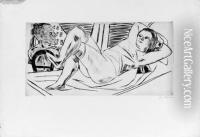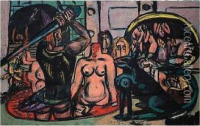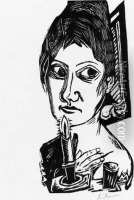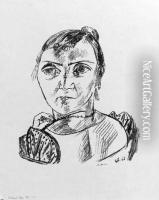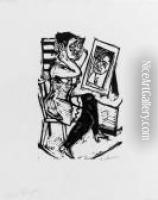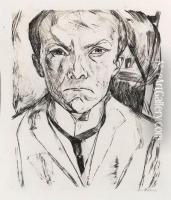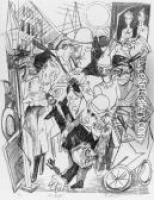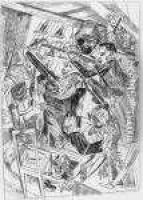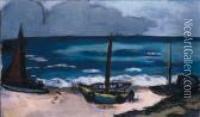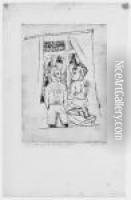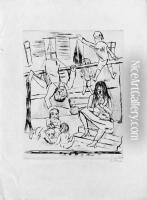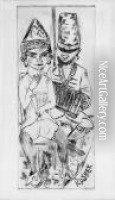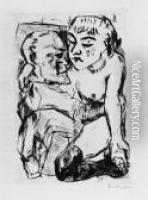Max Beckmann Paintings
Max Beckmann was a German painter, draftsman, printmaker, sculptor, and writer. Although he is classified as an Expressionist artist, he rejected both the term and the movement. Beckmann was born into a middle-class family in Leipzig on February 12, 1884. He began his formal art education at the Weimar Academy in 1900 and moved to Berlin in 1903, where he studied under Lovis Corinth.
Beckmann's early work was influenced by Impressionism, but after serving in World War I as a medical orderly, his style became increasingly expressionistic, reflecting his personal experience of the war's violence and the psychological trauma it inflicted. His work from this period shows a preoccupation with themes of suffering, dislocation, and a search for meaning.
During the 1920s, Beckmann enjoyed significant success and became a leading figure in the Berlin art scene. His work became more symbolic and allegorical, and he developed a distinctive style characterized by bold colors, angular figures, and an emphasis on the grotesque and the theatrical. Beckmann also produced a notable body of work in printmaking, creating expressive etchings and lithographs.
The rise of the Nazi regime in Germany proved to be a turning point in Beckmann's life and career. His art was condemned as 'degenerate,' and he was dismissed from his teaching position at the Frankfurt Art Academy. In 1937, over 500 of his works were confiscated by the Nazis, and he fled to Amsterdam, where he lived in self-imposed exile for the next ten years.
In 1947, Beckmann moved to the United States to take a teaching position at Washington University in St. Louis, Missouri. The final years of his life were marked by a series of successful exhibitions, and he continued to paint prolifically. However, his time in America was short-lived; he died in New York City on December 27, 1950.
Today, Beckmann is remembered as one of the leading artists of the Weimar Republic and is recognized for his contributions to modern art. His work is held in numerous public collections, including the Museum of Modern Art in New York and the Tate Gallery in London.
